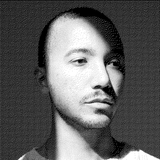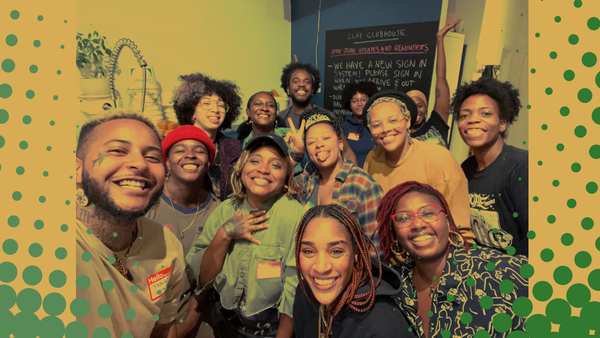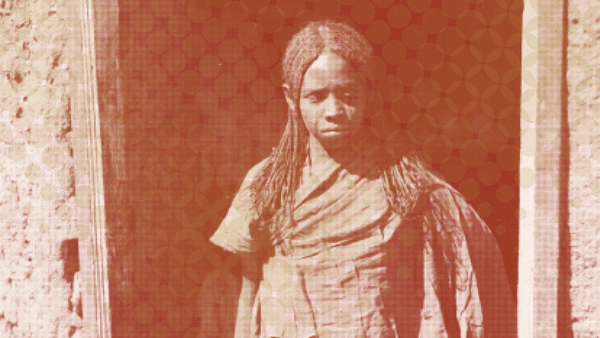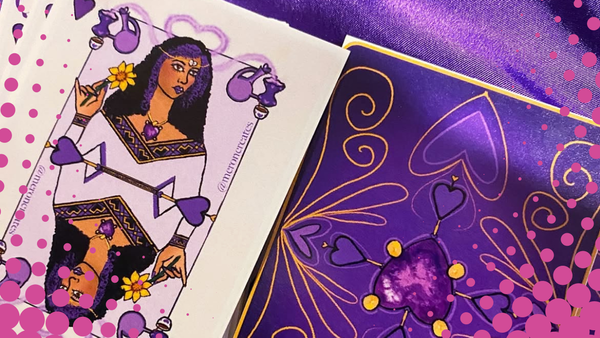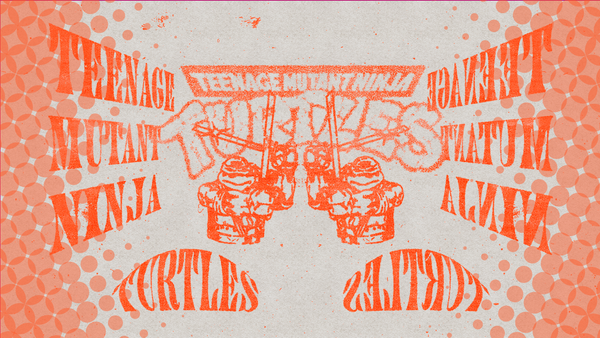The Power of Nine
"It's not one plus one, or even two times two. It’s Àròko to the power of nine members. We're all multiplying our skills and our time together, rather than trying to add them or divide them or subtract them."
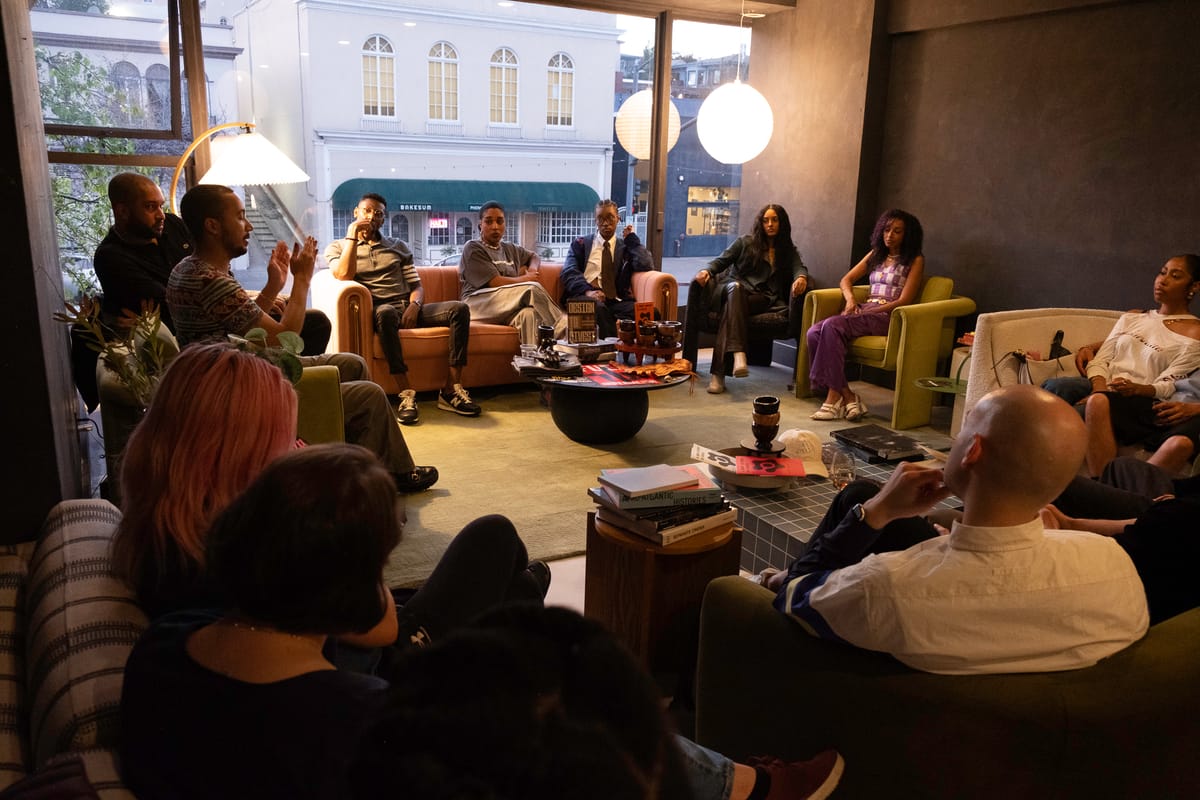
To close out Black History Month 2025, the Àròko Team collaborated with Alkali Rye, a beverage story in Oakland California, for our first, week-long pop-up. We invited the local community to a discussion where we covered the origins of our coop, what we’ve learned working together, and how we plan to build our work into a sustainable business. The title of the discussion is a reference to an ongoing joke within the group, about the exponential power of our working style.
“It's not one plus one plus one, or even two times two. It’s Àròko to the power of nine members. We're all multiplying our skills and our time together, rather than trying to add them or divide them or subtract them.”
If you like any of the products you see here, you can purchase all of them in our shop.
Shakeil
Welcome to the Power of Nine, which will be a panel, but also just a chit chat, because y'all seem really nice and lovely. We don't want to talk at you for an hour, we'd rather talk with you for an hour. We'll do a round of intros, including how we came to the group, what the group means to us, and what what we do within it. From there, I'm gonna open up the questions right away. For intros let’s do name, pronouns, where you're coming from, where you're from, where you live, etc. And is it plantain, plantain or plátano…
I'm Shakeil. He/him, pronouns, coming in from Brooklyn, but I'm from Seattle and Portland and Philadelphia and the Bay Area, and it's plantain because I'm Jamaican.
Michael
Michael, he/him/comrade. From San Francisco. Born, living, dying. Plátano, porque aquí es Latino America, y si hablamos español.
Azeez
I'm Azeez. I am in the Town, I grew up in Louisiana. My family is from Nigeria, from Lagos. So it's plantain.
Kristen
I'm Kristen. My pronouns are they/she, I'm from Fresno, California, but I live in the Fruitvale. It is plantain.
Kellyn
I'm Kellyn. I use they/them pronouns primarily, I guess. But whatever is fine. I live in Brooklyn. I am from Cleveland originally, and you know, I'm just straight up here, so it's just plantain, ehhhh?
Meron
Hi everyone. My name is Meron, and I use she/her. I'm from Seattle. I was born there, and I'm currently living there, and honestly, I feel like it depends on the restaurant on that.
Mahlet
Hi everybody. My name is Mahlet. I also go by Mahie. She/her pronouns. I am from Seattle, but I used to live in the Bay, so Oakland has my heart. I would say which I was yesterday, I think immediately I was like, plantain, and I then I was like, plantain… So it's in between.
Shakeil
So what does Àròko means to you. Why are you here?
I'm here because I have found my favorite group of collaborators in the world, in this room right here. It is so fun to work together for many reasons. These are cool people, but also these are very radical and aligned people with me politically, and with what I'm looking to do in the world.
Michael
I have the honor of being the oldest amongst us, which is not something I've spent a lot of time in my life doing, and for me, it's so encouraging. When so many of my peers, so many of my people that I look up to feel so dispirited and so despondent about where we find ourselves, I'm just overjoyed to be in the presence of people who are enthusiastically committed to a better world. And if I can send memes and tell jokes and obsess about typography every now and again in the service of that, then, by all means.
Azeez
I'm here because we are imagining a new humanism, trying to not only think about what alternative structures or alternative ways of being are, but actually bringing them into reality and manifesting them.
I'm so excited to just be able to be in community with people who are doing that, and it's inspiring. We've been together for almost five years, and that's a long time. You know, for people that you've never met, strangers, and we're still here. And it started remotely, so to still be in contact and working together says a lot of the bonds that we've built and the way that we inspire one another.
Kristen
Well, I'm gonna talk quickly, because I don't want to tear up. This group means a lot to me, these people have changed my life. It's nice to be able to get up and like what I'm doing every day and do it with people that respect me and value me and want to take care of me.
Kellyn
I don't have much to add. You can hear what everybody is saying thus far, and that's very inspiring to me. I feel honored and blessed and very, very lucky to be a part of this group, and be value aligned, pushed, and challenged to keep working and doing better with these people. I love you all, you know.
Meron
I feel really thankful that I'm able to work alongside all of you guys. I always feel like, if I'm having a tough day and I join the call, I leave energized. I feel like you're just working on a group project with your friends. It's a really wonderful feeling. And I also just love how we remind each other that any idea that we have, it can take place. We just have to put the work towards it. And it's just great that there are people out there reminding us, like any of our ideas can really take life. And so I just love being in a space where we encourage each other and support each other in making our visions come to life.
Mahlet
Àròko has my heart, like these people here and two plus people who aren't here with us, physically… I just have no words. Like Meron was saying, you have an idea, they will be like, “Well, we’re gonna make it happen. So how are we gonna make it happen? Let's make it happen now.”
Everything that is said and done in this space is just so liberating and so energizing, and it's just everything you can dream of. These are my people, and I'm so blessed and so honored to collab with y'all and learn and grow and evolve.
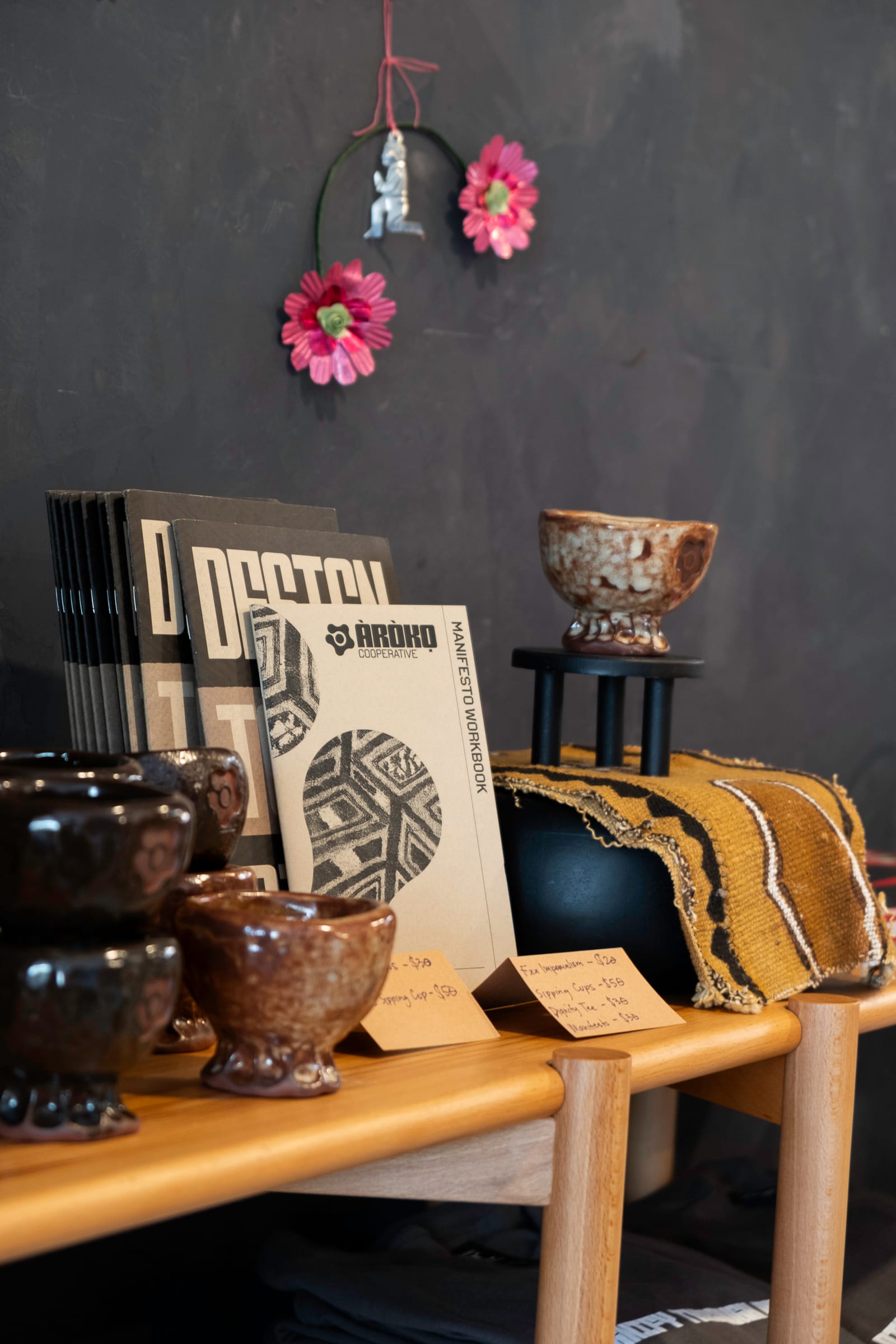
Shakeil
So this is the this is the most we've all been together in person in five years, minus two of our members, Zariah, who's in Charlotte, and Aishatu who's in Germany, so shout out to them. And over that five years, we've done our manifesto, Cosmic Slop, client work, talks, rabble rousing of various sorts. We just wanted to give you all a little bit of the background. So with that, does anyone have questions?
Audience Member (Talia)
All right, hey y'all, I'm Talia. Thank you for holding this. So my background is in restorative justice and transformative justice, specifically working with QTBIPOC community collectives, doing social justice work. In the span of y'all’s evolution, what has been the collective relationship to conflict, and how do y'all resolve those conflicts.
Shakeil
One thing that we've had on our side is time. We didn't start as if we were starting a business where there's money on the table. It started as, ‘We're all fucked up, and feeling real sad, and could really use some community. Let's come together, let's talk some shit. Let's get people out and making.’
I think having at least two years of that time allowed us to get to know each other in a way where we have been pretty blessed to not have many major conflicts. But we thought a lot about how we made decisions, which is through consensus. Anything that we're gonna do, we all need to be bought into it. And if even one person is like, ‘I actually don't know if that's the right thing to do,’ then we come back to the drawing board. And I think that has allowed us a lot of room to trust each other, and get to know each other, and not have things escalate so much.
Talking about money specifically, we're also very transparent. Everyone here has access to the finances. If you want to know what someone's making on a project, it's all available. We're very clear with splits for example, whenever we do client work. There's a whole system set up where, at a certain price range, 20 percent goes back into the coop, which is then available for all of the members. For example, we we paid Kristen for the labor of making these cups out of the communal funds.
Azeez
Being communal in the way that we make decisions also comes with our ideology around time. Time doesn't become a constraint to us being able to come to a decision as a group.
We talked about conflict, and while there isn't much between us, we have client work, and there could be friction there. And we have to say, ‘Are we living by our actual values?’ And if we are, then those things can resolve themselves pretty simply. And then being upfront, right? Being upfront when we enter a client project and saying, ’This is what we're looking for. This is how we operate. These are the boundaries.’ It's almost like creating a constitution in the beginning of the process that is a shared agreement between both parties. And then we can always come back to those principles to deal with conflict, to deal with any type of friction. Even if we then need to reimagine these principles later.

Audience Member (Sylvia)
Hi, Sylvia, I'm an Oakland resident and have been thinking about possibly creating some form of co-op. I would love to learn a little bit more about how you got started. It obviously didn't start as intentionally as a co-op. So what flipped it to being the co-op, and what were the things that you did originally to help set up those principles and ideologies and practices.
Michael
One of the things that all of us were reacting to in the summer of 2020, and the institutions that we personally felt really wronged by, was Design. Fuck Design.
Audience Member (Sylvia)
Yup, that’s what I’m feeling too!
Michael
So we might not have known that we were looking to become a co-op at that time, but as we started working together and taking on design work together, we all knew that we didn't want to replicate the coal faces that we had turned from. And coming back to your question, we have a deep ideological alignment that comes from trauma, and the shit that you deal with in professional work.
I think we're all trying to be who we needed when we were younger. “Hov did that so you wouldn't have to go through that,” right? At every turn, we're aware of that. We're trying not to replicate dynamics that we've been part of. And so that kind of intentionality led us to cooperative alignment, but it was something that I didn't even know we could do! They don't tell you, you can just decide to not have a boss, but you actually can decide to just not have a boss! It requires people who you deeply trust, but yeah, you can just decide that nobody's in charge, and then you're all in charge.
Azeez
The first thing was, like, we just came together in community. We started off as Design to Divest. It was the idea of divesting from systems of oppression, whatever they are. And so there's this coming together in community, understanding that we're all designers and creatives, and we want to figure out a way to be able to leverage our skills and our talents for something that's going to be greater than an individual.
And when you find people who are so aligned and make you feel like it's possible to actually execute on a vision, that's liberating. Then you start to then figure out, ‘Well, what more can we do together?’ And then just the core ideology of divestment, right? We were like, ‘Okay, we can't do things in the same way that the system has created that has boxed people in,’ right?
So you get a nonprofit. Well, how's that working? You create a business or a B Corp. These are the systems that we're trying to divest from! So we need to try to apply this design methodology and thinking then. We're working with our lawyer to figure out what is a structure that's actually going to make sense for us to be able to do the things that we want to do, and be able to sustain our own well being, both financially and as a group, and deliver on the work to actually build community.
Because most of these structures, whether they're organizations or nonprofits, struggle so much to actually be community oriented. They struggle so much to actually deliver to the communities that they exist in. And we knew that that's the opposite of what we wanted to be.
Kellyn
We were all coming from the design field, but from different places in design. There were different things that we were encountering. ‘A nonprofit might not be right, because I've had this experience here,’ you know what I mean? So that played into it. And then during the development of the manifesto was when a lot of the conversations about what our structure would be [took place].
Kristen
Since the beginning, I feel like we've been very nimble, and ready to do something different when it started to feel like it wasn't working. The very first Zoom call that we were on was like, over 300 people, and that population mimicked the design industry. So six percent of the people on the call were actually Black folks.
We would have a small group meeting with the Black designers, and then talk to everybody else about what we wanted to do. We'd share design ideas and design challenges, which were weekly exercises to get people mobilized around supporting what was happening at that time. One of our former members was leading weekly readings, so we would give everybody reading material and have a conversation at the end of the week. Then it started to feel like a little bit too much labor. We were teaching non-Black folks how to be better, and we had to have a conversation about that.
Azeez
We were doing that every week.
Kristen
Every week! For months! We all had jobs. We're all in lockdown and we just added all this stuff to our plate. So we've continued to shift whenever we needed to.
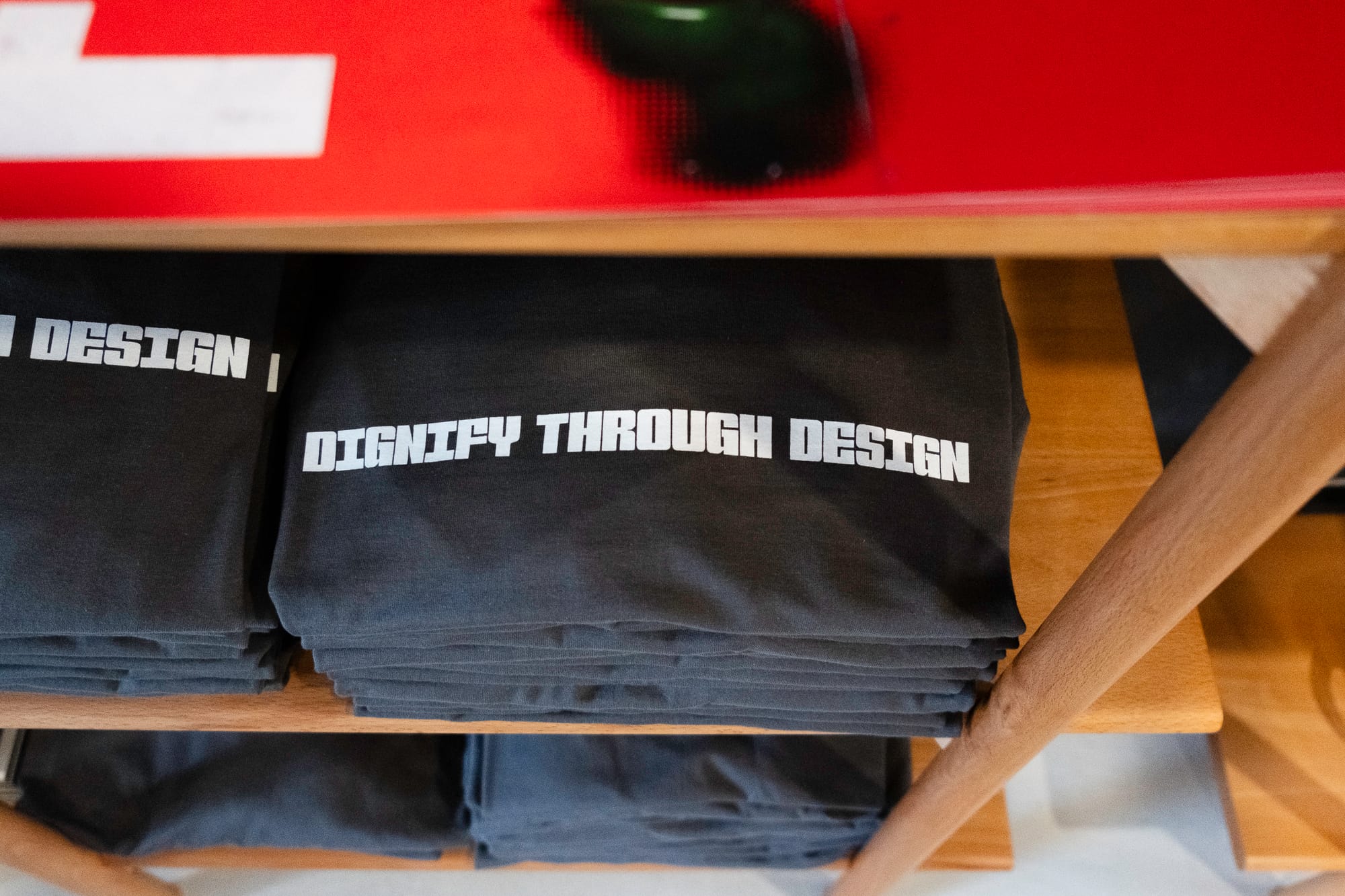
Audience (Baba)
Hi, my name is Baba. I'm originally from Nigeria, but I've been living in Oakland for so long, sometimes I say I'm from Oakland. My question evolves around entrepreneurship.
Sustainability in this type of environment [is hard]. In this capitalist state, you still have to think about money, whether you like it or not. What type of model are you guys trying? And the second part is, what type of client do you guys work with, and what type of client are you not going to work with? How do you guys make this into a money making machine?
Shakeil
You know the phrase is, ‘Pull yourself up by your bootstraps.’ And there's a lot of ways to do that, right? We came to the conclusion of, ‘We're gonna build the boots.’ We decided early that we are intentionally not accepting investment. We don't want to give up control of what we want to do, because we're very specific, and we're also doing some very radical things. Accepting outside money might complicate that.
But we also need to make money, and we need to pay the bills. So what we determined is, ‘Let's do client work, and we'll use a some of that revenue to pay members directly, and then set aside some of that revenue so we can produce our products.’
We do work with clients that are aligned and that pay us well, and that is the seed investment into the business. We do interesting work, and we then have money that we can set aside, that we can reinvest into making publications, products, et cetera.
Azeez
When we created the manifesto, we were like, ‘This is our ideology in a very tight way. How do we start to then utilize that in reality?' And that's where the client work came in. We needed to test [our principles] out.
We started off with one small client and said, ‘Okay, this works,’ and then we started getting more and more clients. One of the core things that we were talking about earlier [in our history] was pollinating the world with tangible examples of communal wellness and well being. So we always wanted to build our own products and sell those products out into the world. As you can see, these mugs are actual representations of what it looks like to take a canon of ancestral knowledge as an alternative to Western European thinking processes, and create something tangible out of that.
We have workshops and educational courses that we're starting to develop. We've already done a few workshops, and we're able to pull in money from from that as well. So there's a bunch of different models across the different areas that we want to impact.
We think about, ‘How do we influence the pedagogy of design? How do you showcase actual practice?’ And then ‘How do you actually bring in more and more people into the fold?’ All of the different streams of work contribute to those core principles and those core values.
I will add one more thing, though. We're not trying to follow a capitalistic model similar to these larger companies. There's probably a limit to where we grow, that we're going to be like, ‘That's good.’ We're not trying to take over the world. We're not trying to push another colonialist perspective of trying grow until you're too big, and just needing to defend and take and take and take and take. Infinite growth is not ours. It's not sustainable for the community.
Michael
The introduction of your question brought up something that I think we've grappled with internally, which is this line between art, creative, and design, and we have members that straddle a number of those different categories. But I am a designer. I am the son of designers. And design is to be of service. It is a service profession. It is one that involves performing that service for someone. You can be your own client up to a certain point, but we have an ideology that we're trying to put into practice. That manifesto is not just for funsies. We're really trying to live like that, and the only way that I see it, and I'm a simple man, you apply that thing by working it. And so that's been where we've started, and we've had the advantage of time on our side. These are small streams that are collecting slowly into a river.
Kristen
One of the most immediate things that happened after the initial 300 person Zoom call was that there was an intake. It was like, ‘Here are some grassroots organizations that are a part of what's happening in these uprisings.’ The people who are doing real activist work do not need to be worried about how to get their website up. ‘How can we give our our skills to serve that?’ They don't need to waste their time doing that. We can do that for them. We can do it for free. Because that's the gift we have to give.
We want to support aligned groups. I also think that we don't want to be gatekeepers. We want to be gate openers. So as we figure out what we're doing, we do want to share those models with people, and let them know that this is what we ran into, and this was what was difficult, maybe avoid this or try this out. We want to share that stuff.
Azeez
We also are individual creative entities that might have our own businesses and our own brands. So like Kristen has ketchup stain and so you like these beautiful ceramic pieces here are also part of our artist brand. And then meron and Mahi are also building a clothing line, as you can see, what Mahi is wearing right now. And these are also brands that like. We're incubating as like part of a cooperative model where we can share resources, both our creative labor, but also distribution, manufacturing, all of those contexts that we start to build. We're also sharing that as like, for individual entities within our own cooperative. So, yeah, like, that's, that's another thing in terms of both making money and also how we're organizing too.
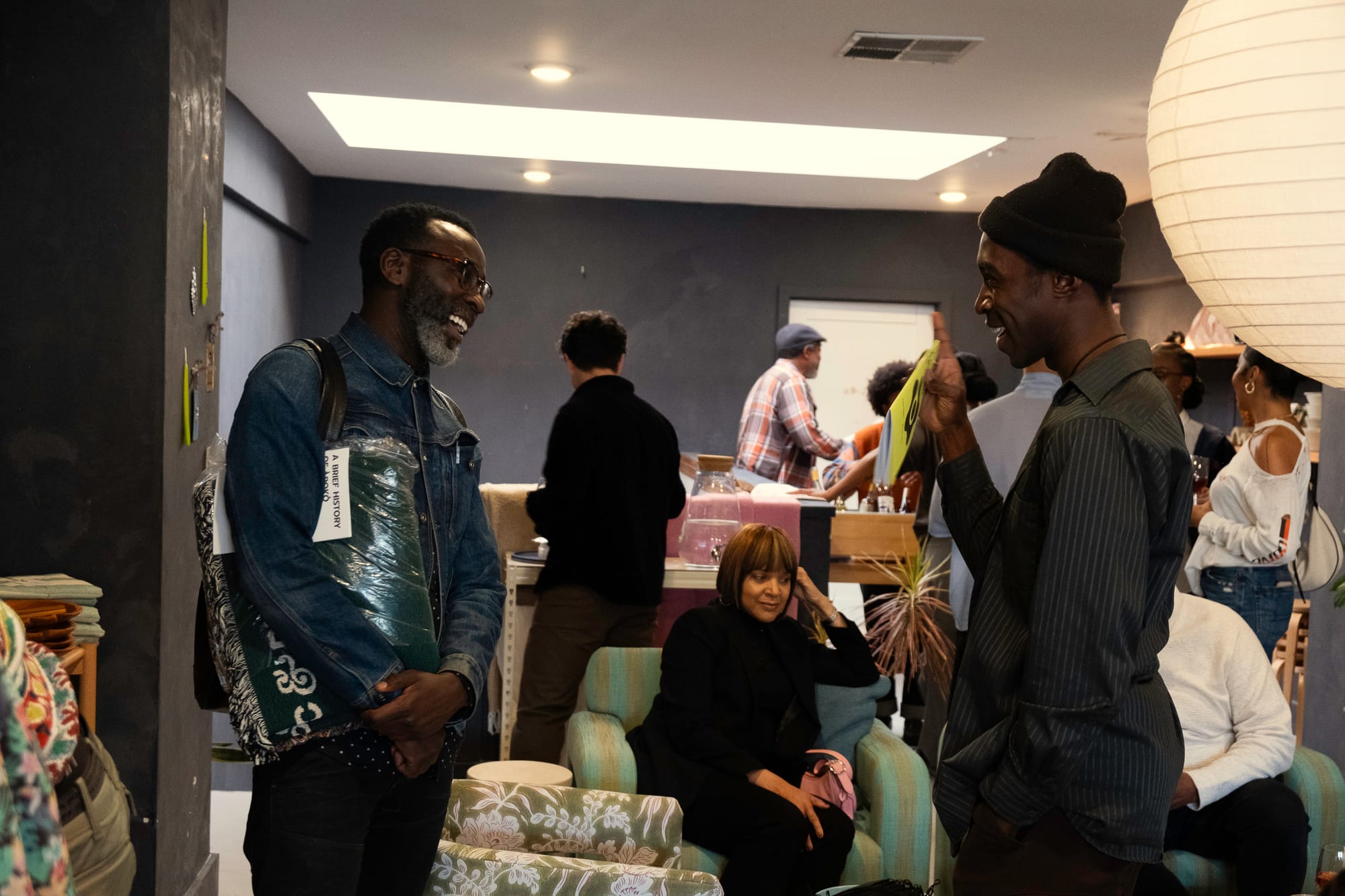
Audience Member (Kevin)
So you are all design practitioners in your own regard, and I'm curious, once you develop this manifesto, how is the work that you do now different when you're designing against a manifesto versus what your corporate experience was, or the agency experience that you've had. How do you see that show up different in your work? How does your work look different, feel different?
Mahlet
When I think about that question, it reminds me of my experience working in nonprofits. I used to work for a women's rights nonprofit, and a lot of the things that would be said, that were ‘believed’ were not always put into practice. And in that nonprofit industrial complex, I felt like I was always going against something. I felt like I was being gaslit 24/7. So when I think about our manifesto, and what we do, and how Àròko operates, it's like everything that's in our heart is real and it's possible. It reinforces the beliefs that I have, and that we all share. We are very sane people, and this is possible, and it reinforces and affirms how I want to move in the world.
It does have ramifications, but that's okay! I choose not to be in those [toxic] spaces anymore, and I want to continue building that [liberated] world so that other designers, other folks, other creatives, can also understand how to navigate out of places that feel really harmful in that way. I think another thing we are about is figuring out how designers globally can feel interconnected to one another and find resources and lifelines with each other too. We did a healing session back in 2020 where we had a practitioner come in virtually. It was a moment for folks, individually and collectively, to really share what they were feeling, find traumatic healing, and just different ways of allowing that necessary connection with one another.
Meron
I joined right after I graduated. When it first was Design to Divest, I was so wrapped up in school, I couldn't really be as active. But I went to design school, I was so serious and stressed and never wanted to make a mistake, and it was really affecting the way that I was producing designs. I feel like just being surrounded by these… I almost said seasoned, but it's because you (gestures to Michael) always say, “I'm so old!” (laughter). But yeah, these very experienced designers, and seeing how they don't take design too seriously [helps me]. They're creating amazing stuff, but they're not letting it kill themselves. Slowly, I'm relaxing in my approach and not being so hard on myself.
Shakeil
I really love that you brought that up because that's one of the biggest things for me. In the relinquishing of singular ownership, there is this pillow of support for our work. And I think being able to work with people and be like, ‘Oh, I'm gonna be the designer,’ or, actually, ‘I'm gonna be the creative director’, or ‘I'm gonna be the art director.’ And then sometimes Michael will direct me, or Kellyn directs Michael, or I will creative direct Kristen, or vice versa. I think that reciprocal process, at least for me, has been totally revolutionary in how I think about design. We all do the work together, so it all rises with us, or it all falls with us.
Michael
Yeah, shit is just fun! I like logging on to my computer. You know how fucking rare that is?
Kellyn
I joined right after graduating undergrad, and then we put out the manifesto, and then I went to grad school. I can recognize the delta in my attitude in grad school, and then my attitude in post-undergrad where I was very much feeling imposter syndrome. Feeling stuck, but then also feeling really worried about, like, ‘Is this good?’ Now, I went through my whole master's program, and they would show us stuff like Bauhaus and all of these westernized design resources. I had a era of being like, ‘I know that this is what you're supposed to know.’ But now my influences are different, and the way that I'm referencing my influences is different, and how I'm thinking about what I want to make. A lot of the wanting, the pressure, came from wanting to make something cool. And now I'm like, ‘I don't really actually care if this is cool, it should be important or necessary. I just want it to be useful.’ And that's hard in school, they don't want you to do that, they want you to be appealing to people.
Kristen
I also think that design education doesn't give a lot of space for those mistakes. I was drawing all my life, and when I got to school, I started to have performance anxiety around drawing, because there's a way to draw, and there's all these European traditions around drawing. I'm still working my way out of those things. And I think that I was actively trying to do that after I graduated, and got into my first job. Which was also a corporate job, which, you know, has your shoulders lift higher and higher up, especially navigating those spaces in this body.
I experienced a lot of frustration in my early professional life, and I couldn't really put my finger on what it was that was so frustrating. I didn't necessarily have the language around it. But then, you get to this really heightened moment, really distraught, trying to figure out what to do next, and then having these conversations with these people about, ‘What is design, actually?’ and 'How do we want to show up in the world?’
Maybe there were pieces of that existing in me already, but now there's actual language for me to work against. I don't think that I would be doing my Black Clay classes [without that]. And I don't think I would be doing them the way that I do them, without the work that we have done together.
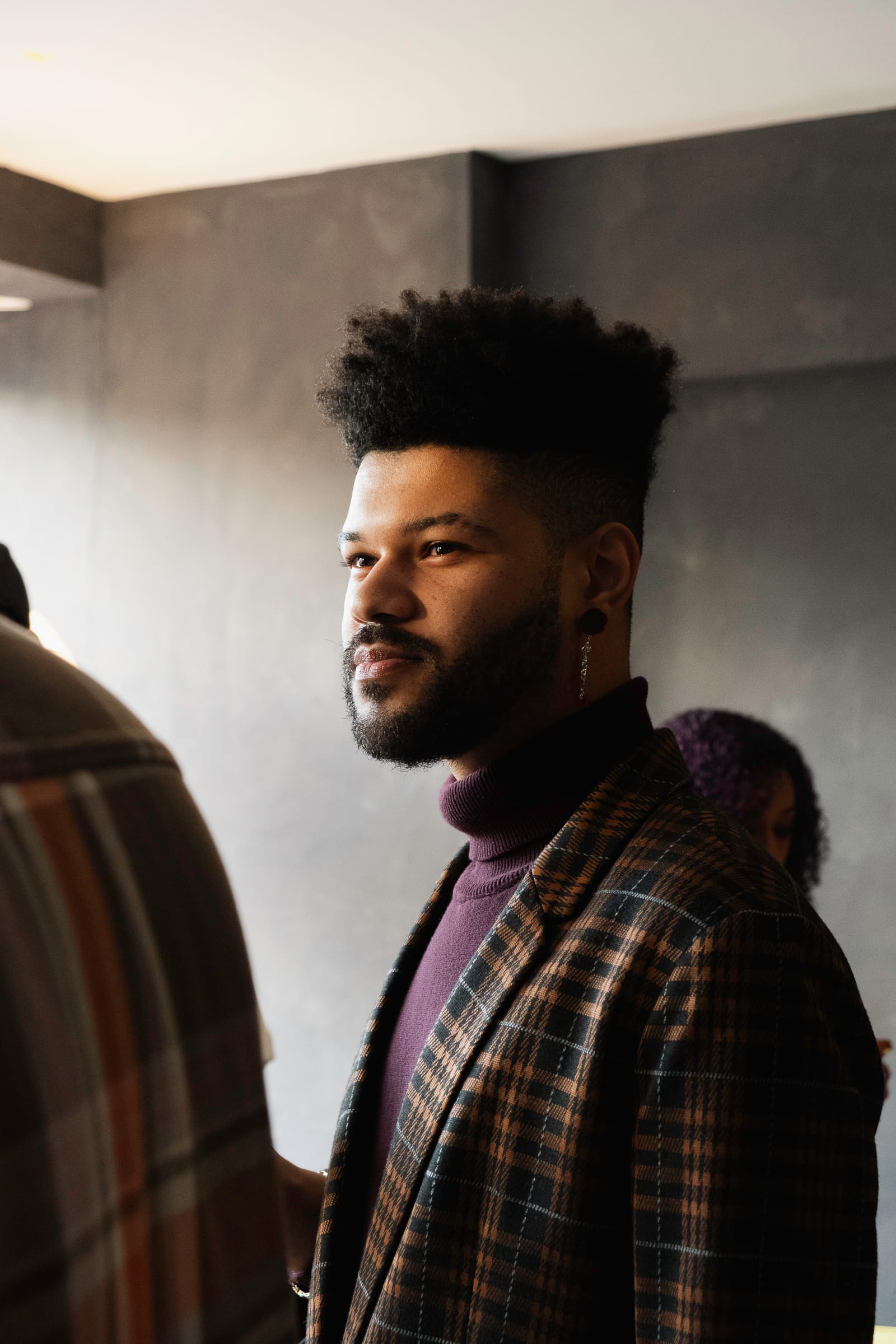
Audience Member
Azeez said to me earlier about how design has been used for a tool of oppression, and how design can also be used as a tool for liberation. And I oftentimes think about how as Black people specifically, we have to always convince people that we are human, that we are worthy to see us and treat us as we deserve to be safe and treated. And I know that you all talked about how you were teaching a lot, right?
Is that still a crucial part of your model? Teaching what you all believe should take place in design, or how people should be thinking? Or do you really work with individuals or organizations that already know? How much do you go out to folks who haven't caught the vibe or the hint?
Azeez
Not much!
Kristen
It took a really long time to get our manifesto together. I mean, there's nine people coming from completely different walks of life, experiences, good and bad, different taste, whatever it is. And we had to get aligned on what we believe, and we all had to be behind these words. That took a long time. I feel like we've been very internal for a while. This is probably the most public thing we've done [as a group].
Azeez
Teaching is always happening, but it's not as effective to go and try to convince people. I think a lot of people are here because you're thinking about similar things, but you might not have seen it like in reality, or figured out how to articulate it. I think it's so much easier and more effective and more impactful to help people who are already on the path, arrive there sooner.
You know, a core part of the way that we also think about education is in publications. A lot of the cultures that we are trying to bring to the forefront are oral traditions. And every time an elder passes away, you lose a library. So how do we start to continue to document with a lot of rigor, so the generations beyond can start to use that knowledge. Even when you look at the way that Mahie is creating her brand, the techniques are from traditional Ethiopian practices, and then bringing that into a modern fashion sense.
We're trying to get people to experience things in a meaningful way that then starts to shift their perspective.
Mahlet
I was thinking about when we were working on Cosmic Slop, a big part of it was this glossary. We wanted [to make] it for people who get it, but want to go deeper. Even the way that we're doing it with the brand, you can infer, and then you can get deeper, and you can have this connection to it. You feel it, you're wearing it. It's love for generations. I think there's power in the words being deconstructed for folks as well, but I think that having that tangible way of understanding something, like a sacred piece of ceramics that you can put incense in, or something that's connected with your community and your culture, is also really powerful too.
Audience Member (Josie)
How do you think about the difference between art and design?
Michael
I think you ask all of us, you'll get different answers. My line is that design has to work. Art doesn't. Take that as you will, right? Art is in the service of the artist, and I'm all for that, but design has to be in service of the person who will come to interact with it. You have to be thinking about someone outside of yourself, even if that is simply somebody who shares a lot of the same identities and concerns that you have. But for me, design is about thinking about how this thing will be used, and be useful, to whomever encounters it.

Audience Member (Tom)
I've been a product designer in tech, and then also an urban designer. One of the main things that I have tried to explore over the last couple of years is participatory design. So what role does the broader community play in shaping the outcomes?
Michael
I'd say as much as we can. A lot of the opportunities that we've had in practice together have not been immediately community facing. So a participatory lens on our work thus far looks like engaging the client and the whole client team in, if not the nitty gritty of what we're doing, at least the development of the narrative direction and the story. I come from a branding background, and so much of that work is about consensus and storytelling. Because again, what we're doing as designers is creating something that's useful, but that utility is embedded in the story that people attach to it and their connection to it.
Azeez
I think it depends on what it is that we're designing, because we always want to design in collaboration and in participation with the people who are going to be receiving it. And so that's how our client work is. We invite them [into the process]. I talk about this idea of design literacy. Some people aren't literate in terms of how their decisions are affecting the outputs, but everyone can actually start to develop that literacy and that language, and then be more and more involved in terms of understanding how those decisions that they're making are affecting the outputs.
And even so, we can to talk to Mahie about how she's developing her brand in Ethiopia, with the communities of people who are the elders in the craft of the fabric. When Kristen creates her ceramics, it's participatory with ancestors. There’s an understanding of that spiritual connection to ancestors in the creation of all these different faces that show up [in her work].
We're constantly thinking about who is going to engage with the output, and bringing them in one way or another. The way that we developed the manifesto, it wasn't really just us. That whole three or four years was a participatory process for us, starting to understand what the community is talking about, what the community is saying and needs, and us then synthesizing that into an output that then was then shared with people throughout the design community.
There's so many iterations of this manifesto that we shared with other designers. People who didn't consider themselves designers. So that is part of our approach and part of how we think about things.
Shakeil
I think we have room time for one more question.
Audience Member (Baba)
I commend you guys for going forward. It's a lot of guts, because you don't know what's gonna happen tomorrow. And you know, I believe our designers are gods, honestly. I commend you guys for realizing that even though you have this amazing skill set, and you can be in corporate environments, and make tons of money, you really want to create something that you want to see. So I commend you guys for that. Thank you. Thank you sharing it with us and bringing us into this conversation.
